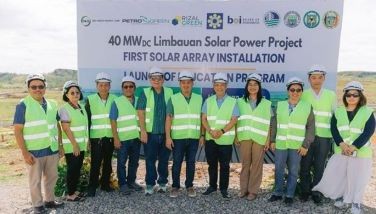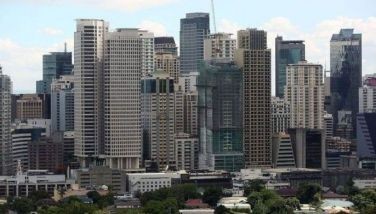From energy regulation to deregulation (Part 3)

This is a continuation of the previous articles this year in this column , “From energy regulation to deregulation” Part 1 (Jan. 25) and Part 2 (Feb. 6). In Part 1, the three regulations I discussed were price control via the secondary price cap in the Wholesale Electricity Spot Market, high reliability standards and fines, and price regulation after competitive selection process (CSP) has been done.
In Part 2 I discussed a dangerous regulation of “benchmarking rates” not only for transmission and distribution but also for procurement of necessary power supply for distribution utilities (DUs) and ancillary services (AS), explained five reasons why the policy is wrong.
In Part 3 I will tackle prolonged regulation by the Energy Regulatory Commission (ERC) on already awarded CSP procurement of ancillary service power agreement (ASPA) by the National Grid Corp. of the Philippines (NGCP).
From what I gathered, NGCP implemented AS CSP in early 2023 to procure its ASPAs. Many or most ASPAs that time were either expired or nearly expiring. The agreement in mid-2023 then among the Department of Energy (DOE), ERC, NGCP and generation companies (gencos) was that ERC would fast-track the approval of those ASPAs that already won in the CSP.
The ERC issued notice of resolutions (NOR) for the provisional approval (PA) of some ASPAs around August or September 2023. Not all gencos were issued PAs, some were issued interim relief in 2024 already. However, those NORs, PAs and interim reliefs have capped prices or price-controlled.
The gencos were asking ERC to resolve the ASPA rates as the price capping has adverse effects on their operations and financial stability. It is already 2025 and the ERC still has not resolved the issues on ASPA rates.
Frequent use of government price cap or price control often leads to cheap but not available products and services. When products are artificially cheap because of price control, demand goes up while supply goes down. If non-distorted market price is P11/kwh but controlled price is only P10/kwh, some households who normally use only electric fans at night will turn on one or two air-conditioners. Some gencos that cannot make a profit for their efforts will limit if not stop producing electricity at some levels. End result is cheap but not available electricity. Or blackout.
Power supply insufficiency is felt every single year until this year via frequent yellow-red alerts during dry months. Luzon and Visayas grids are particularly prone to this. We need more investments in big, stable and reliable sources of electricity. Private investors can mobilize funds but are scared to lose money with price control polices. Investor confidence is low for generation, transmission, and even distribution aspects of electricity. Good thing that there is co-optimized market system as alternative which can provide other business opportunities.
I checked the ERC website, “Applications and Petitions” for Power Supply Agreements (PSAs) between gencos and distribution utilities or electric cooperatives, also ASPAs with NGCP, there are many: 90 in 2022, 146 in 2023, 171 in 2024, and 54 as of February 2025 alone. The high numbers maybe including multiple filings per case (motions, manifestations, etc.).
I asked ERC chairperson Monalisa Dimalanta how many of these are approved or still pending approval, she replied that “for ASPAs the live ones are 36 arising from the NGCP CSP in 2023, all with provisional authorities and for final evaluation this month. For PSAs, out of 946 cases filed, 383 have been resolved.”
Good, Madame Chair. It is also good that the ERC is doing a 60-day time limit to act on pending applications.
In 2006, power generation of the Philippines was 57 terawatt-hours (TWH) while Vietnam has 58 TWH. After 10 years or in 2016, they have 91 TWH and 179 TWH respectively. And in 2023 they have 119 TWH and 276 TWH, respectively.
Aside from heavy investment in power generation, transmission and distribution by the Vietnam government and private sector partners, I think their energy regulatory environment and practices are conducive to investors, that they are properly rewarded for their risk-taking power projects.
We should have a similar investment and regulation environment here. If CSP – designed by the ERC itself – has been successfully held, then it should be considered as least cost already and no other price adjustment downwards by the ERC should be done. Any verification should be limited only to how transparent and compliant with the rules that the CSP was conducted. Deregulation moves should be done once players have complied with the regulatory procedures and requirements.
- Latest
- Trending

























